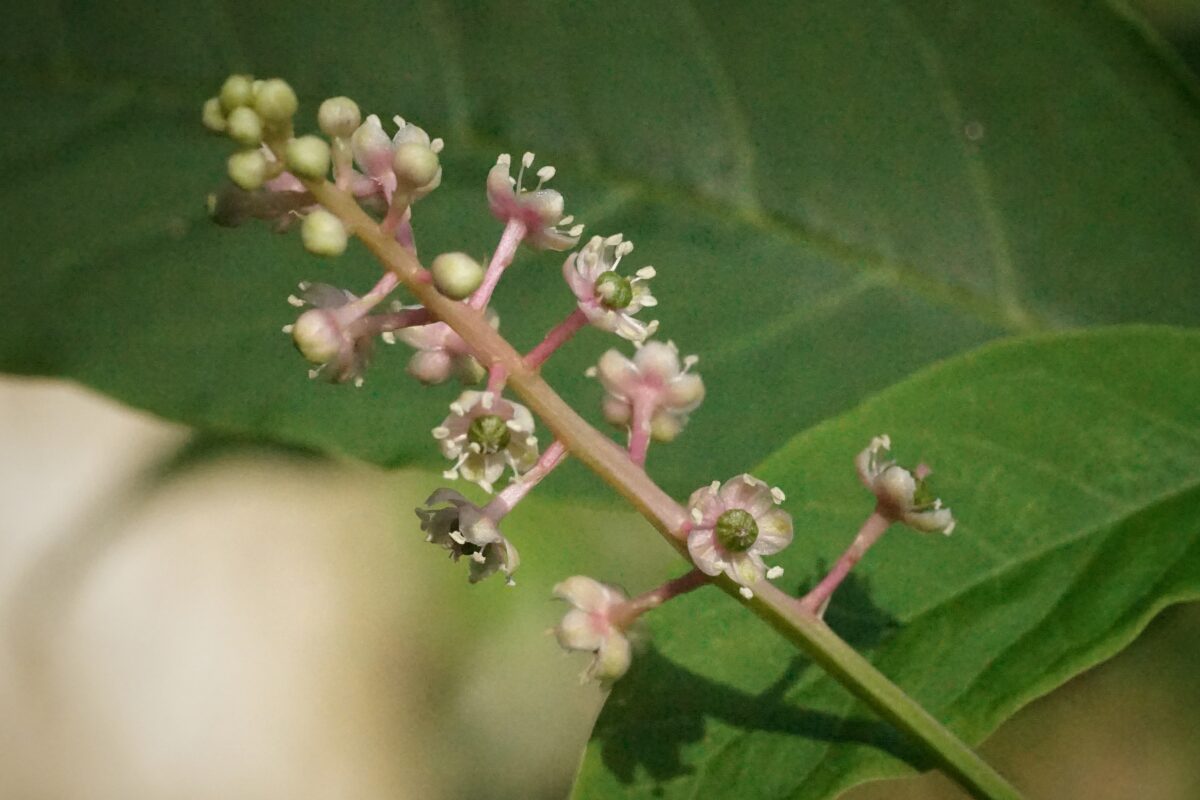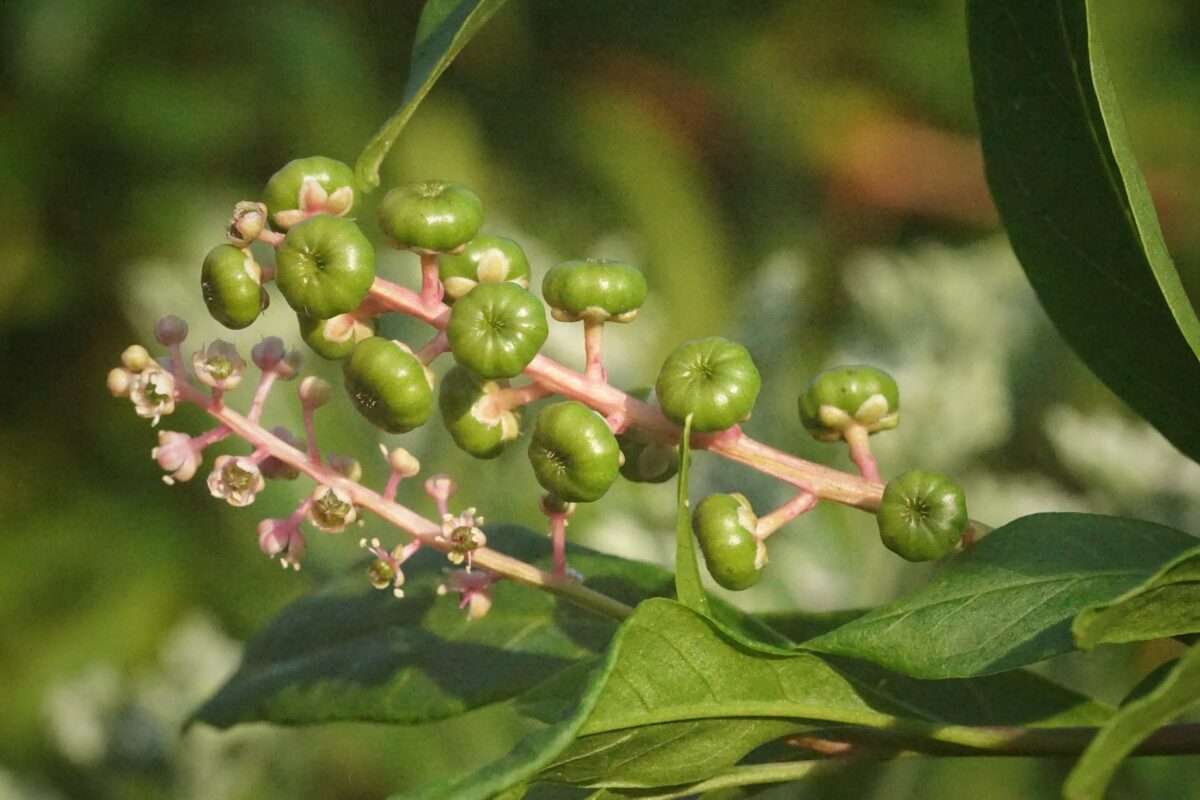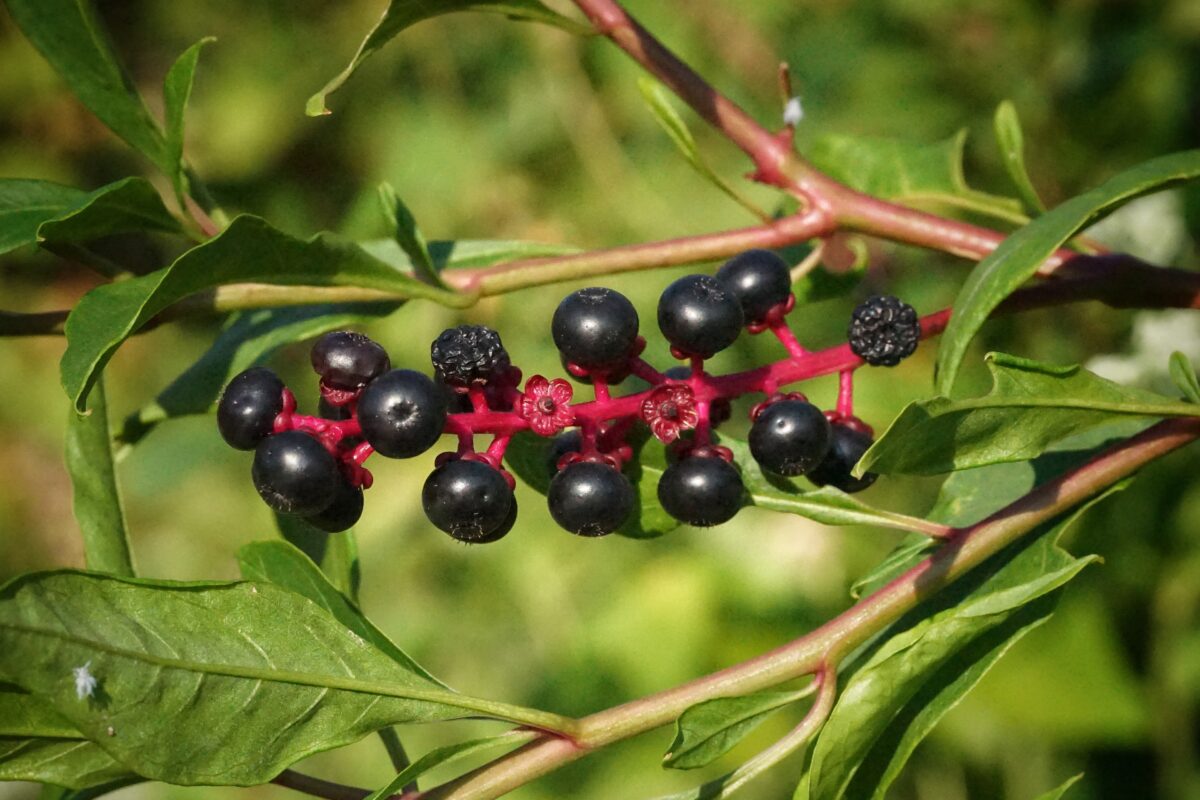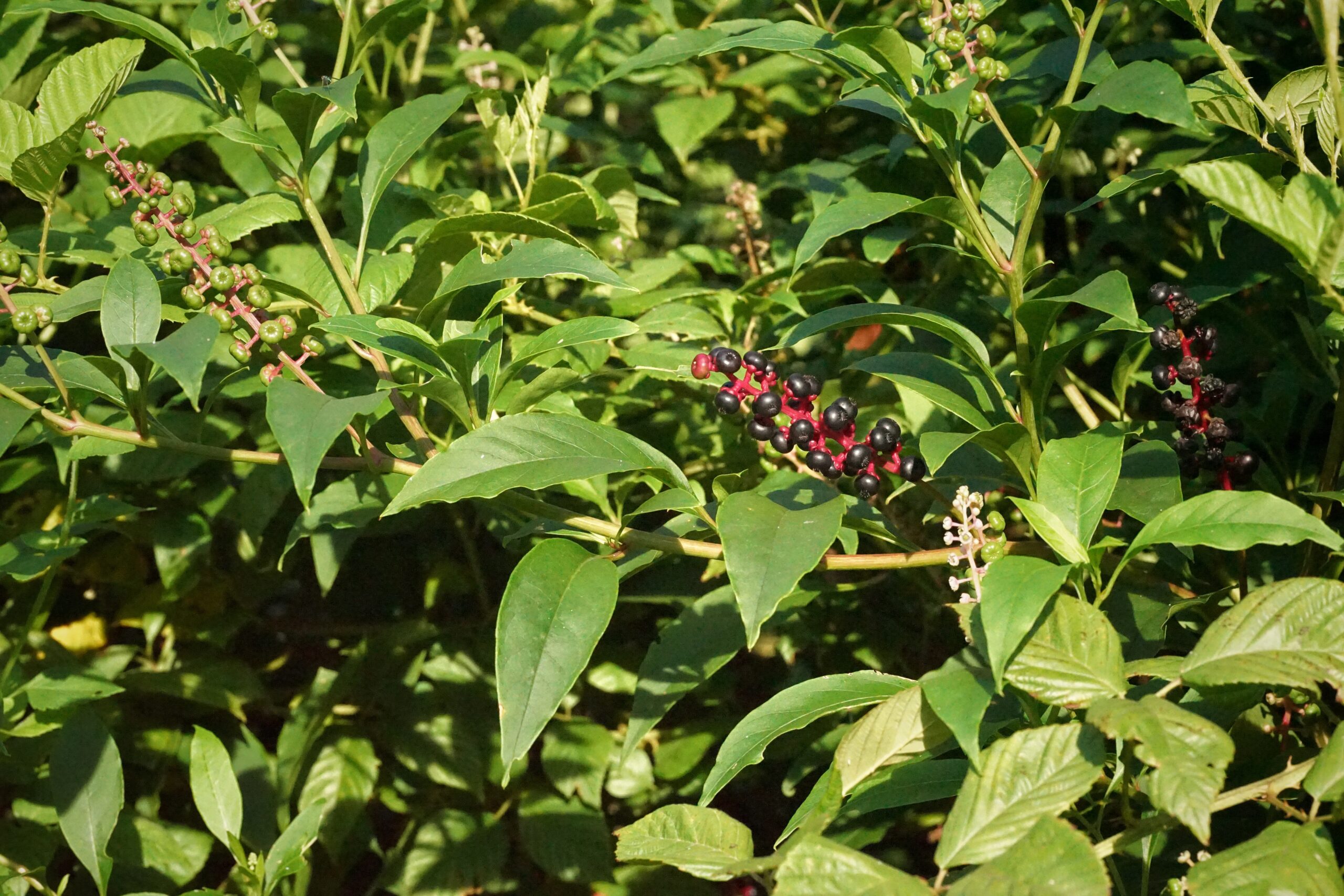American pokeweed
Pictured above: Pokeweed (Phytolacca americana) by Emily Bell. Click on terms for botanical definitions. View post as a PDF.
Pokeweed (Phytolacca americana) is an interesting native plant with quite a history! It is native to the central and eastern United States and found throughout Florida. It grows in woodlands and will happily colonize sunny disturbed sites by self-seeding prolifically. The plant has significant wildlife value in providing both nectar for many bee species and berries for birds and small mammals.
One or more stems grow from a tuber-like taproot. The stems may be variable from a light yellow green to reddish purple and can be up to 2 inches in diameter. Its large green elliptical to lanceolate leaves can grow to 12 inches long and have tapered ends. Numerous very small white flowers consisting of five sepals are born on a long raceme. Pollinated flowers become light green berries that turn dark purple to almost black at maturity.



The word “poke” is derived from the Virginia Algonquian word “pakon” and refers to a plant used for dye. Pokeweed’s dark berries produce a red pigment that has been used for centuries for everything from decorative purposes to food coloring to ink. Despite many parts being highly toxic, this plant also has edible components and was popular with American settlers as one of the first spring greens available. Canned poke greens were available commercially in the US until the year 2000, and in parts of Europe, they are even a mainstream vegetable. The seeds and roots are the most toxic components of the plant and should never be consumed. A detailed description of the plant’s edible components and safe preparation can be found here.
Family: Phytolaccaceae (Pokeweed family)
Native range: Statewide
To see where natural populations of Pokeweed have been vouchered, visit florida.plantatlas.usf.edu
Hardiness: Zones 8A–11B
Lifespan: Perennial
Soil: Deep rich sandy or limestone soils
Exposure: Full sun
Growth habit: Up to 20 feet tall, but more typically 6-10 feet tall and about 5 feet wide
Propagation: Seed, division
Garden tips: While not widely cultivated, Pokeweed may volunteer itself in home landscapes and can be grown from seed. It can be a nice addition to wildlife gardens, but it may need to be kept in check by pulling seedlings.
Pokeweed plants are not commercially available. Visit a natural area to see them.
Learn more about Pokeweed from the Florida Native Plant Society and The Institute for Regional Conservation.

